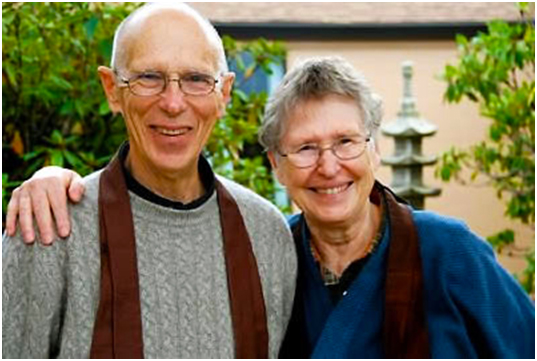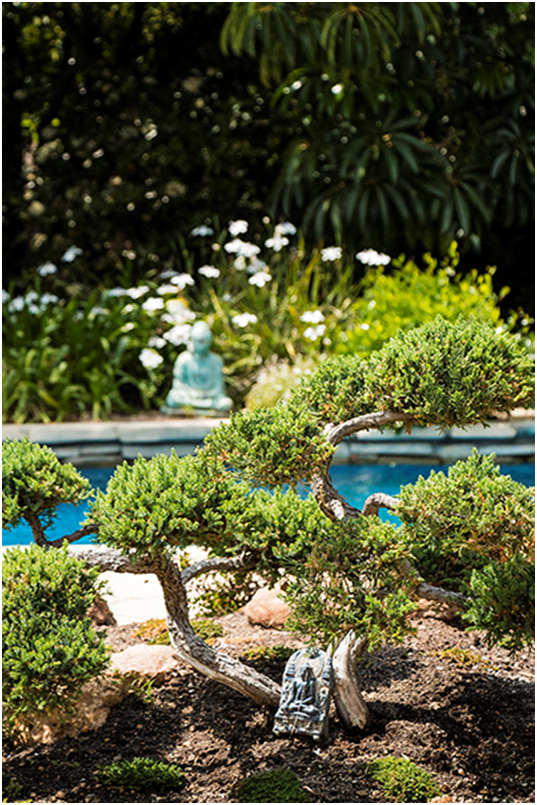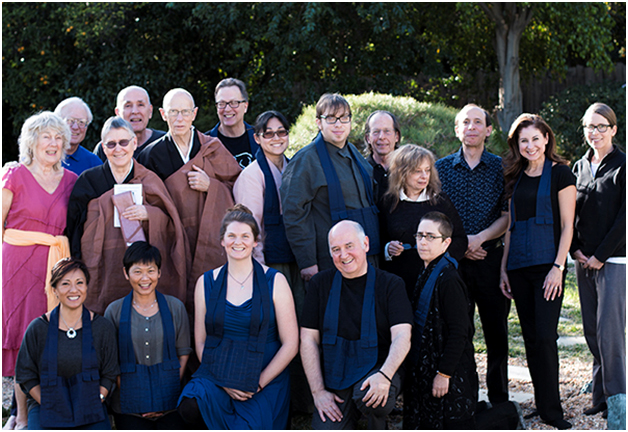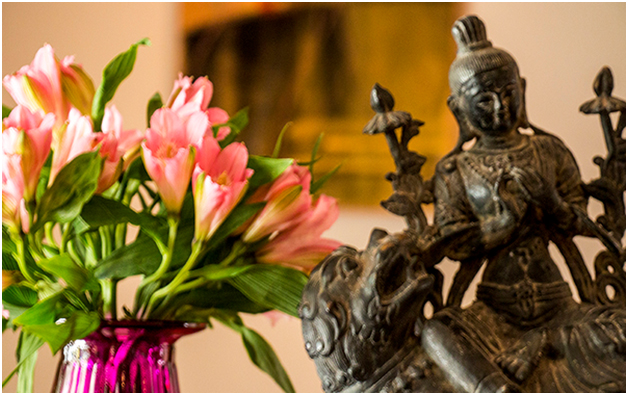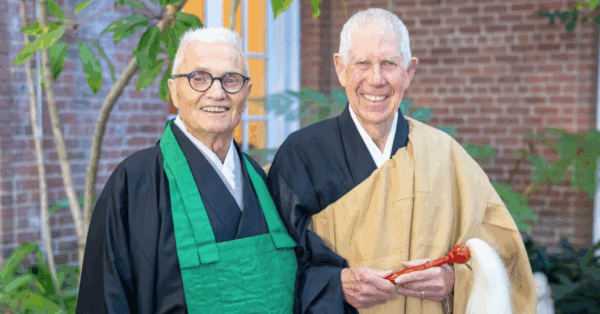The name comes from the Zen Buddhist term “beginner’s mind,” which describes an openness, eagerness and lack of preconception in living one’s life. —from beginnersmindzencenter.org
A Branching Streams sangha profile by Cody Farley (Northridge, CA)
(A series of articles introducing sanghas affiliated with San Francisco Zen Center in the Branching Streams network)
Beginner’s Mind Zen Center (BMZC) is blessed with—not one, but–two teachers, Peter and Jane Schneider. In 2003, they converted the tiny dining room in their Northridge home to a zendo and opened their door for guests to sit zazen. Carrying on the tradition of their teacher, Shunryu Suzuki Roshi, they sat Monday through Friday at 6:30 a.m. and welcomed others to join them. Eleven years and eight jukai ceremonies later, BMZC is a thriving, self-sustaining center for practice with 27 regular members.
Being located inside the teachers’ home has presented both advantages and challenges. People who find us via Meetup or internet searches are sometimes thrown by the suburban location, but they enter through the side gate and circle the house to see a swimming pool enveloped by a Zen garden of statues, fruit trees and giant stones. If visitors have any uncertainties, they are surely gone as they enter the back door and find themselves in the zendo. With the dining room long since outgrown, the converted living room, with its hardwood floor, altar and tans (crafted by Zen architect Paul Discoe), provides an open but intimate zendo that often seats 20. When there are more, furniture gets pushed to the wall in the old dining room/new living room.
Like other spiritual centers, we welcome the revolving-door-like stream of first-timers, but a core group of dedicated students has given us a foundation to deepen the practice and expand what we offer. In 2005, two years after Peter and Jane opened their home, we formed a board of directors, elected a president and treasurer, and applied for and received nonprofit status from the state and federal governments. As time went on, members deepened their own practice by taking on responsibilities for newer members, such as giving zazen instruction. The roles of ino (head of the zendo/ceremonies), work leader, shika (guest manager) and tanto (head of practice) were also added. A chant book expanded our service from two chants to a rotation of six. Sesshins and zazenkais are scheduled throughout the year, and recently the Full Moon Ceremony was added to our monthly calendar.
In 2012, we were honored to host Zenshin Tim Buckley as he received priest ordination from Peter and served as shuso (head student) during the 2013 practice period. (Tim leads the Great River Zendo, a Branching Streams group in West Bath, Maine.)
On Friday nights, Peter and Jane host a discussion group of Buddhist texts, and on Saturdays most people are able to attend, so the zendo is usually full. Zazen instruction is given before the regular schedule begins, and there is a meeting with either Peter or Jane afterwards. The schedule begins with two 30-minute sittings and includes a dharma talk, followed by service and work practice in the yard, zendo or kitchen. The day’s program ends with our newest tradition: members and guests pile around the unique kitchen table for tea, vegetarian lunch and lively conversation.
One of our biggest challenges continues to be expansion, as our zendo is already filled on Saturdays and retreats. We are about to finish both an expansion of the zendo onto the back patio using Paul Discoe doors and a fund-raising drive to pay for them, but the possibility of eventually leasing space elsewhere is brought up often. It seems unlikely, however, that we will ever move to a commercial space. There is a spirit to our community and a warmth that is grounded in the “home.” And as we strive to integrate Zen practice into our daily lives, what metaphor could be better than our neighborhood zendo?
__________
Visit SFZC’s website for a directory of Branching Streams sanghas, or for more information, e-mail us at branchingstreams@sfzc.org. For more about BMZC, visit beginnersmindzencenter.org.


